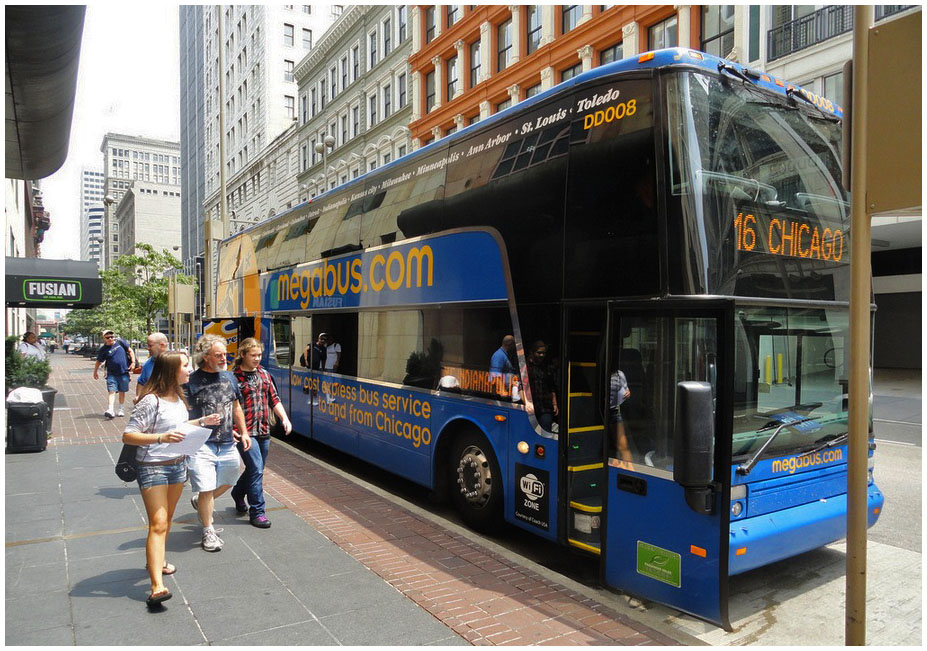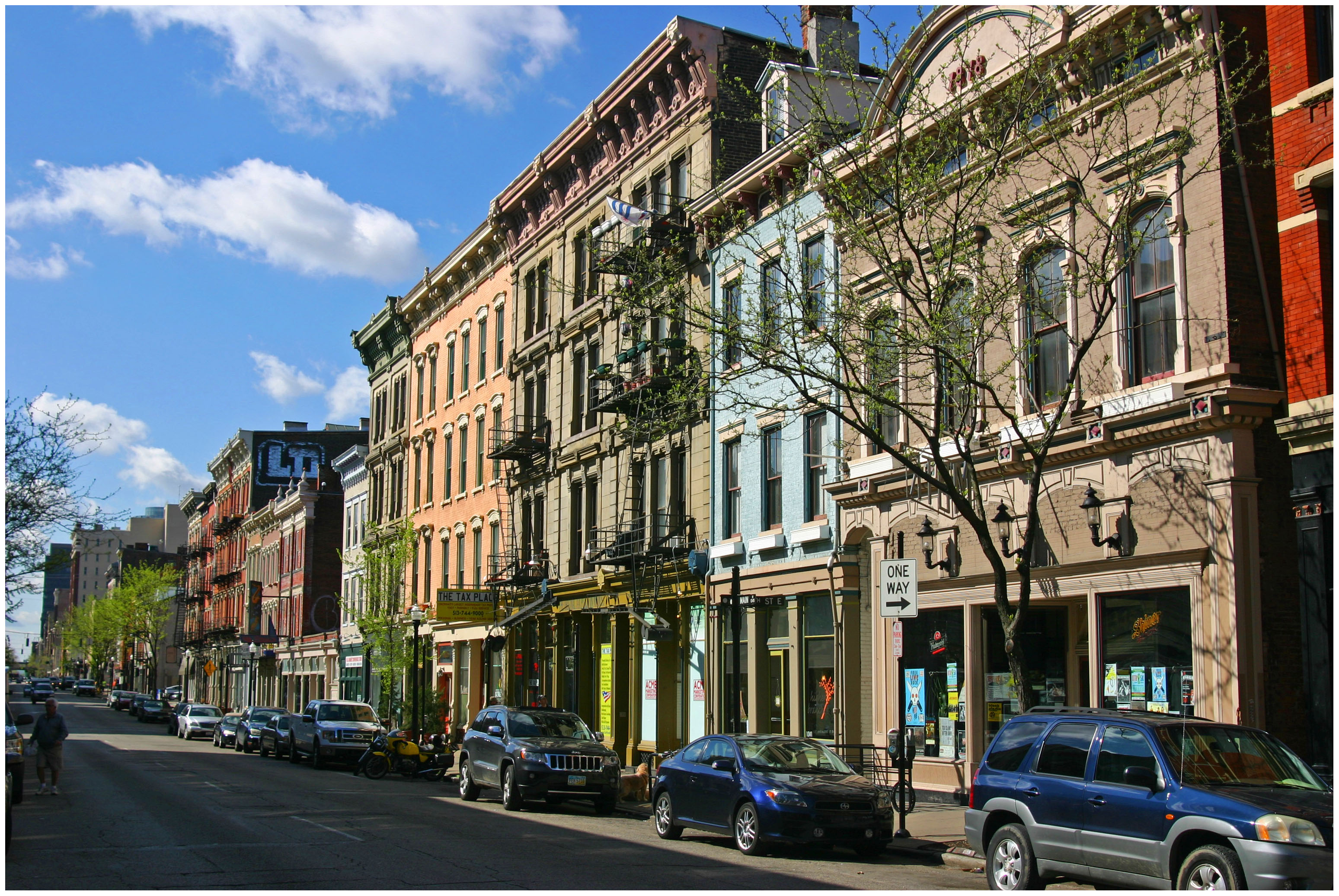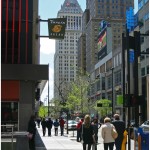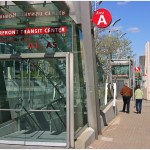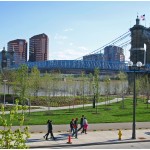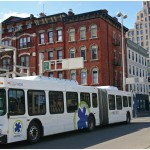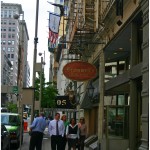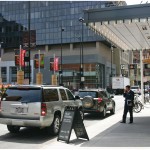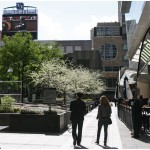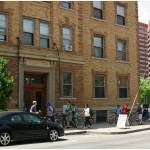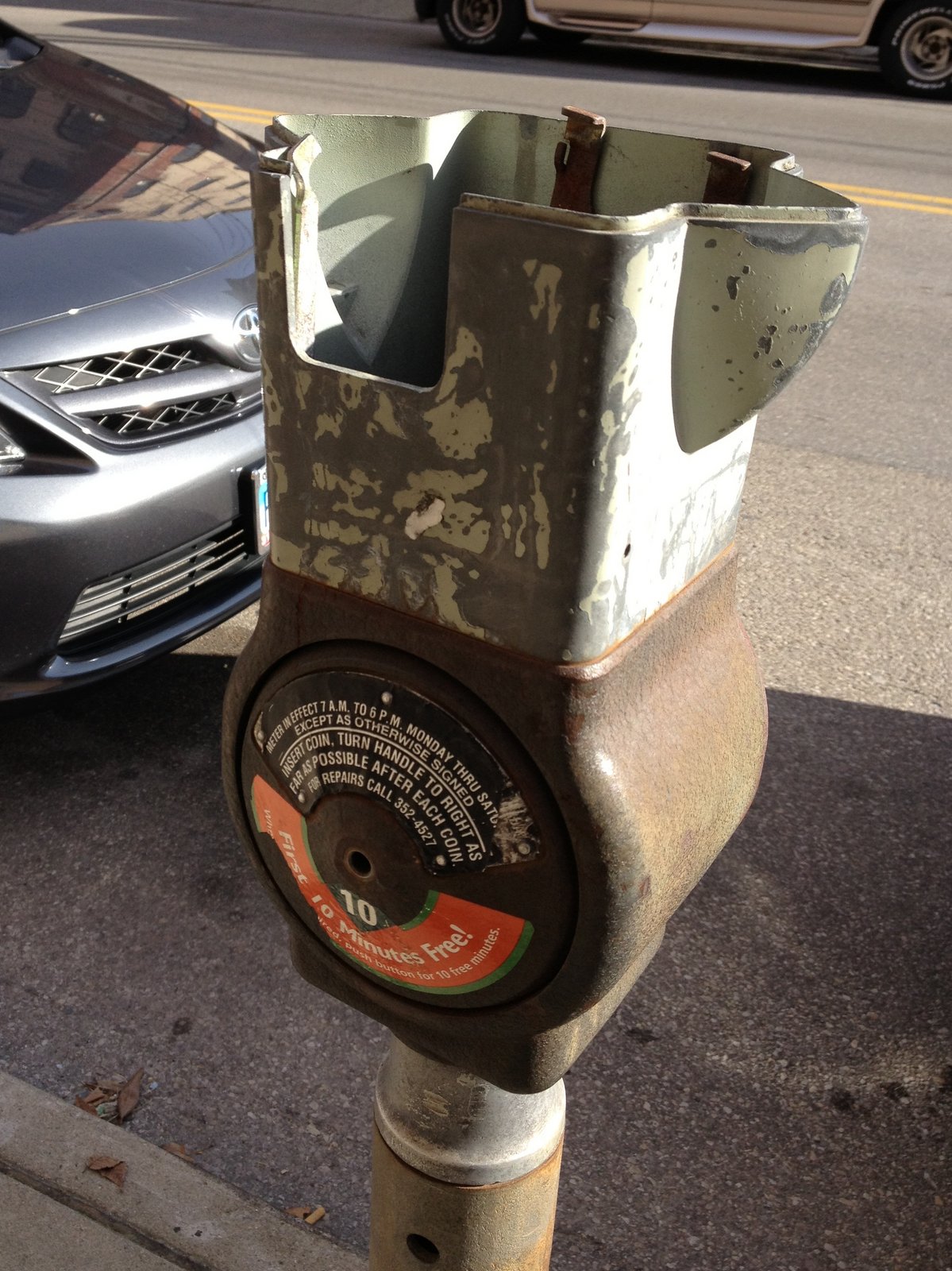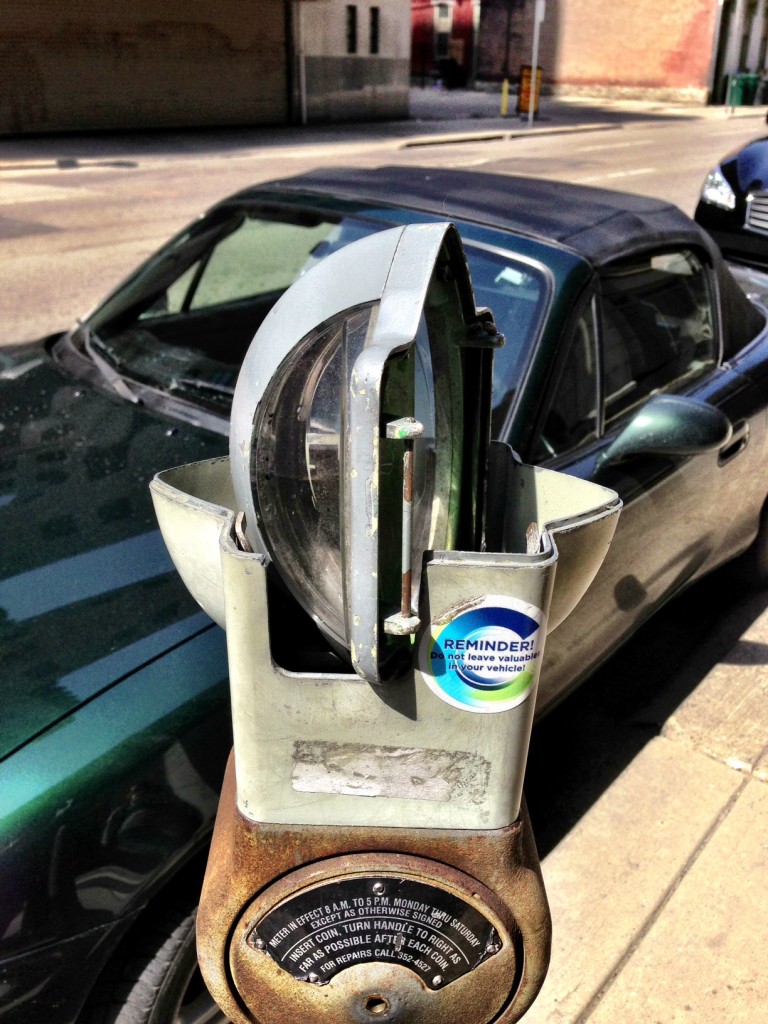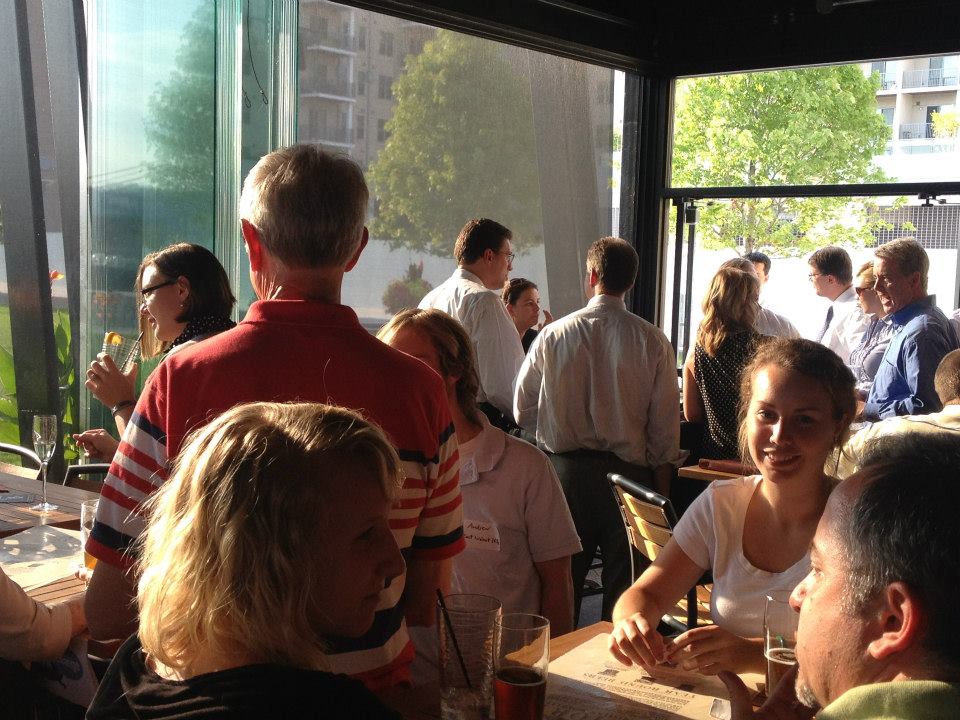Megabus has added new service between Cincinnati and Lexington, bringing the total number of direct destinations out of Cincinnati to nine (Atlanta, Buffalo, Chattanooga, Chicago, Columbus, Erie, Indianapolis, Knoxville, and Lexington).
The new Lexington service, which runs twice a day with 9am and 9pm departures from the 4th/Race Street Stop, continues the growth of inter-city bus travel out of Cincinnati.
In December 2010, Greyhound Express service was added out of the bus operator’s center city terminal, and Chinatown bus operators have added service since being profiled on UrbanCincy in February 2012.

Megabus has seen continued ridership growth in Cincinnati, but may have to soon relocate its downtown stop due to reconstruction of Tower Place Mall. Photograph by Thadd Fiala for UrbanCincy.
Megabus itself added a second station in Cincinnati at the University of Cincinnati earlier this year, due to requests from the institution and its riders, and it has bolstered service on other routes through the acquisition of Lakefront Lines in 2008.
“We launched the brand in April 2006, and it was a major and exciting event because we didn’t know how it would go,” explained Mike Alvich, Vice President of Marketing and Public Relations for Megabus.com.
Since its launch seven years ago, routes to Indianapolis and Chicago remain the most popular. Megabus officials also say that the Cincinnati hub has experienced double-digit ridership growth and has served as a critical component of its growing national network.
“Cincinnati has been one of the jewels in our crown since our story began,” Alvich stated.
While Megabus officials would not comment on specific ridership totals, they did note that inter-city bus travel has been growing faster than both intercity rail and air travel in recent years, with Megabus experiencing 30% growth between 2011 and 2012.
Part of the reason, Alvich says, is the fact that inter-city bus travel is now time-competitive and significantly cheaper than air travel and it offers growing cost savings over cars.
Inter-city trains, meanwhile, continue to see a lack of investment and service, even though ridership has grown on that mode at a faster rate than air travel in recent years, and is setting ridership records.
“We consider ourselves to have two real competitors,” Alvich explained. “The first is the car, and the second are people’s concerns that they cannot afford to travel nowadays. As a result, people are staying at home or going somewhere local…so in a way we’re also competing with people’s couches and air conditioners.”
Another factor with the continued growth on inter-city bus service is the different transportation preferences among Millennials and aging Baby Boomers.
For Megabus, the largest share of their customers is people from the ages between 18 and 39. But Alvich notes that some of their fastest-growing demographics are seniors and families.
He also says that approximately 55% of their riders are women, and says that a consistent source of business for Megabus is groups of three to five women going on short weekend trips together.
Additional changes appear imminent for intercity bus operators in Cincinnati, as the Greyhound Bus Terminal is surrounded by the Horseshoe Casino and the main Megabus stop at Fourth/Race will soon become a construction zone. Officials at both companies said that plans have not been agreed upon yet, but that they are tracking the situation and will make changes as necessary.
